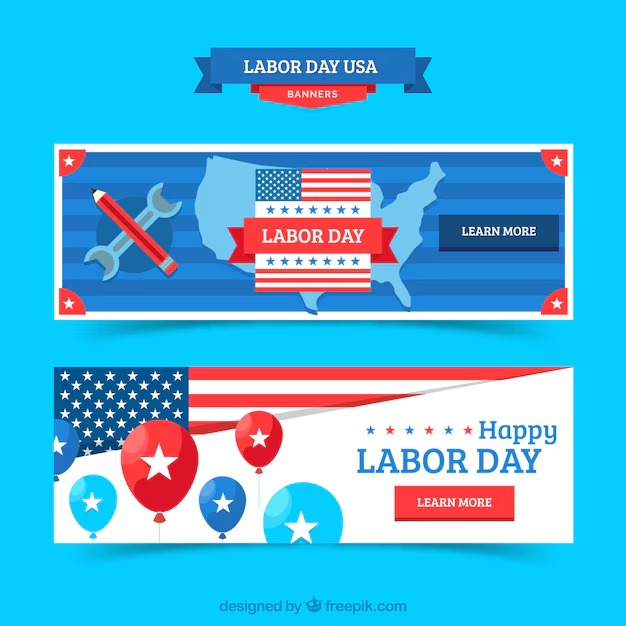
NLRB Positive Reforms by the US Labor Board to Support Unions
NLRB Positive Reforms by the US Labor Board to Support Unions
Recent developments in the United States are paving the way for a renewed focus on enhancing the rights and benefits of individuals in the workforce. This shift aims to create a more equitable environment where participants in various sectors can thrive and contribute meaningfully to their organizations and communities. These modifications underscore a commitment to improving job satisfaction and fostering collaboration between management and personnel.
The latest initiatives reflect a deeper understanding of the challenges faced by the modern workforce. By addressing pressing issues and implementing supportive measures, authorities are striving to cultivate a more inclusive atmosphere. This approach not only uplifts the morale of individuals but also contributes to the overall productivity and success of the enterprises they are part of.
As these policies take shape, the focus remains on creating a framework that prioritizes the needs of all participants. With an emphasis on fair treatment and mutual respect, the dynamic between employers and employees is set to undergo a transformative evolution. The implications of these reforms are profound, with the potential to reshape the landscape of professional environments throughout the nation.
Recent Reforms at the Labor Board
Recent adjustments in policy have led to significant improvements in the environment for representatives. These modifications foster a more equitable landscape, providing enhanced support for collective interests and addressing longstanding grievances. As a result, the atmosphere for negotiations and discussions has transformed, allowing for more robust engagement.
Key Aspects of the Reforms
- Streamlined processes for filing grievances.
- Increased transparency in decision-making procedures.
- More resources allocated for educational initiatives.
- Strengthened protections against unfair practices.
Impacts Observed
- Improved responsiveness to petitions and claims.
- Greater accessibility for individuals seeking assistance.
- Encouragement of greater participation in cooperative efforts.
- Promotion of peaceful resolutions and productive dialogues.
Impact of Changes on Union Organizing
The recent adaptations in regulatory practices have created a significant shift in the landscape of collective representation efforts in the United States. These modifications aim to enhance the ability of groups to organize and advocate for their interests, presenting a more favorable environment for collective action.
Facilitating Collective Action
One notable effect of the new regulations is the simplification of the processes involved in establishing collective representation. By reducing bureaucratic hurdles, individuals and groups are better positioned to articulate their demands and pursue collective agreements. This transformation not only encourages participation but also empowers individuals to unite and negotiate more effectively.
Strengthening Negotiation Power
With the implementation of supportive measures, the capacity for individuals to advocate for their rights in the workplace has substantially increased. Enhanced rights to assemble and communicate have provided a platform for more robust negotiations. As a result, the dynamics between employer and assembled individuals are evolving, fostering a climate in which advocacy is met with greater receptiveness.
Ultimately, these progressive shifts underscore the growing recognition of the importance of collective representation as a vital component of fair workplace practices, marking a promising new chapter for collaborative efforts across various industries.
Worker Rights and Protections Enhanced
This section outlines the recent advancements aimed at fortifying the entitlements and safekeeping of individuals in the workplace. A series of measures have been implemented to create a more equitable environment, ensuring that everyone is treated with dignity and has access to essential safeguards. By promoting a culture of respect and support, these initiatives recognize the fundamental contributions of all personnel.
Key Improvements
Recent legislative efforts have introduced notable enhancements to the rights of employees, focusing on several pivotal aspects. These improvements not only aim to elevate standards but also to provide a more secure and just atmosphere for all participants in the workforce.
| Aspect | Description |
|---|---|
| Job Safety | Stricter regulations to ensure safer working conditions and minimize hazards. |
| Fair Compensation | Increased attention to wage fairness, eliminating disparities and promoting equal pay for equal work. |
| Discrimination Protections | Expanded measures to guard against bias based on gender, race, or other personal characteristics. |
| Work-Life Balance | Policies encouraging flexible schedules and adequate time off to support personal well-being. |
Future Outlook
The future landscape for individuals in their professional environments appears promising, with ongoing efforts expected to further enhance such protections. Continuous advocacy and engagement from various sectors are likely to play a pivotal role in shaping a more progressive framework, ensuring that the rights and interests of all personnel are respected and upheld.
New Strategies for Labor Advocacy
The landscape of workforce representation is evolving, reflecting the shifting dynamics of the modern economy. Innovative approaches are emerging, aimed at enhancing support for employees and their collective rights. These methodologies emphasize collaboration, communication, and grassroots empowerment.
- Digital Mobilization: Utilizing social media platforms and online communities to raise awareness and organize initiatives.
- Workplace Solidarity: Fostering connections among colleagues to build unity and mutual support in addressing workplace challenges.
- Education and Training: Providing resources and workshops that equip employees with knowledge about their rights and the means to advocate for themselves.
- Policy Engagement: Collaborating with policymakers to create an environment that favors equitable practices and fair treatment.
By focusing on these strategies, advocates can create powerful networks that not only represent individual interests but foster a culture of respect and equity within the workplace.
Challenges Faced by Workers Today
The contemporary workforce encounters a myriad of difficulties that affect both their professional and personal lives. As various industries adapt to rapid technological advancements, employees are compelled to navigate an increasingly complex environment marked by economic uncertainty, evolving job requirements, and shifting societal expectations.
Economic Pressures
Many individuals find themselves grappling with the realities of fluctuating markets and rising living costs. Wage stagnation coupled with inflation puts immense pressure on daily expenses, making it challenging to maintain a decent standard of living. Moreover, the threat of job displacement due to automation continues to loom large, creating anxiety about job security.
Workplace Dynamics
In addition to financial concerns, the internal environment within organizations often presents obstacles. Factors such as workplace culture, management practices, and inter-colleague relations can significantly impact morale and productivity. Increased workloads and a lack of support often lead to burnout, further complicating the pursuit of a healthy work-life balance.
Future Directions for Labor Relations
The evolving landscape of employment relations in the United States signals potential advancements and adaptations that may redefine engagement between organizations and their personnel. As economic conditions shift and societal expectations evolve, the interactions between employers and their teams could undergo profound transformations, emphasizing collaboration and mutual understanding.
Enhancing dialogue and fostering a cooperative atmosphere are emerging as key objectives for many institutions looking to improve overall morale and productivity. New strategies that prioritize communication and transparency could play a vital role in reshaping organizational culture, leading to a more inclusive environment.
| Aspect | Current State | Future Direction |
|---|---|---|
| Communication | Formal and often limited | Open and continuous |
| Engagement | Reactive | Proactive and participatory |
| Conflict Resolution | Adversarial | Collaborative |
| Training and Development | Basic skills focus | Holistic approach to growth |
As these dynamics evolve, it is crucial to consider the implications of these trends on the overall framework of employment interactions. A shift towards a model that embraces cooperation may result in enhanced satisfaction and performance across various sectors, benefiting both entities and their personnel alike.
Q&A: Union friendly changes works us labor board
What is the role of the National Labor Relations Board in the unionization process?
The National Labor Relations Board oversees the unionization process, ensuring that employees can freely choose to unionize and that their rights under the National Labor Relations Act are protected.
How does the National Labor Relations Act support employees who want to unionize?
The National Labor Relations Act provides legal protections for employees who wish to unionize, prohibiting employers from interfering with their rights to organize and engage in collective bargaining.
What actions can employees take if they want to unionize under the National Labor Relations Act?
Employees can file a petition with the National Labor Relations Board to initiate a union election, allowing them to vote on whether they wish to unionize and select their representatives for bargaining.
What is the significance of the General Counsel of the National Labor Relations Board in 2023?
In 2023, the General Counsel of the National Labor Relations Board plays a crucial role in enforcing labor laws, prioritizing cases that involve unfair labor practices and supporting workers’ rights to unionize.
How does collective bargaining relate to the National Labor Relations Act?
Collective bargaining is a key component of the National Labor Relations Act, which establishes the framework for negotiations between employers and unions representing employees regarding wages, working conditions, and other employment terms.
What challenges do workers face when trying to unionize in 2023?
In 2023, workers face challenges such as employer resistance, legal obstacles, and potential retaliation, which can complicate their efforts to unionize under the protections of the National Labor Relations Act.
How has the approach of the National Labor Relations Board changed regarding unionization efforts in recent years?
In recent years, the National Labor Relations Board has become more proactive in supporting unionization efforts, reflecting a shift towards strengthening workers’ rights and facilitating easier pathways for organizing.
What impact does the General Counsel’s guidance have on unionization efforts?
The General Counsel’s guidance significantly impacts unionization efforts by clarifying interpretations of labor laws, shaping how cases are handled, and influencing the overall climate for organizing and collective bargaining.
What role do unfair labor practices play in the context of the National Labor Relations Act?
Unfair labor practices undermine employees’ rights under the National Labor Relations Act, including actions by employers that interfere with workers’ attempts to unionize or engage in collective bargaining.
How are disputes related to unionization resolved under the National Labor Relations Board’s jurisdiction?
Disputes related to unionization are resolved through investigations and hearings conducted by the National Labor Relations Board, which ensures compliance with the National Labor Relations Act and protects workers’ rights.
What constitutes an unfair labor practice under the National Labor Relations Act?
An unfair labor practice involves actions by employers or unions that violate workers’ rights, such as interfering with the process for seeking union representation or failing to bargain with unions without justification.
How have recent rule changes affected the union election process?
The new rule changes aim to simplify the union election process, making it easier for workers to engage in union activity and seek union representation, which is essential for strengthening organized labor.
What is the role of the Department of Labor in relation to labor law?
The Department of Labor enforces labor law, ensuring compliance with regulations that protect workers’ rights, including those related to union membership and collective bargaining.
How does the NLRB’s decision in Cemex Construction Materials impact employers?
The decision in Cemex Construction Materials mandates that an employer must either recognize and bargain with the union if a question of representation exists, thereby reinforcing the principle of the National Labor Relations Act.
What is the significance of the final rule set to take effect on December 26?
The final rule is significant as it outlines new standards for representation elections, aimed at better effectuating employees’ right to unionize and ensuring fairer processes for seeking union representation.
What does the term “bargaining unit” refer to in labor relations?
A bargaining unit refers to a group of employees recognized by a labor union or the NLRB as eligible for collective bargaining, allowing them to negotiate better working conditions and wages.
How do regional directors influence the union election process?
Regional directors play a crucial role in overseeing representation elections, investigating unfair labor practices, and making determinations regarding the eligibility of employees within a bargaining unit.
What are the implications of the Obama-era policies compared to the Trump-era policies on labor relations?
Obama-era policies generally favored organized labor and sought to enhance workers’ rights, while Trump-era policies often aimed to limit union influence and made it more challenging for employees to engage in union activity.
How does Jennifer Abruzzo’s leadership shape the NLRB’s approach to labor relations?
Under Jennifer Abruzzo’s leadership, the NLRB has adopted a more union-friendly stance, focusing on protecting workers’ rights and ensuring that representation cases are resolved quickly and fairly.
What should workers do if they believe an unfair labor practice has occurred?
Workers should file a statement of position responding to any perceived unfair labor practice, which can be addressed by the NLRB, ensuring that their rights to unionize and bargain through their chosen representative are upheld.








